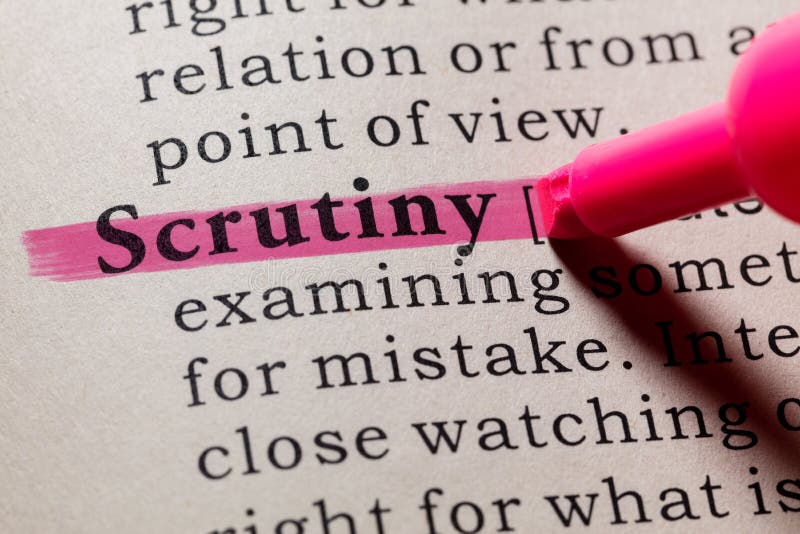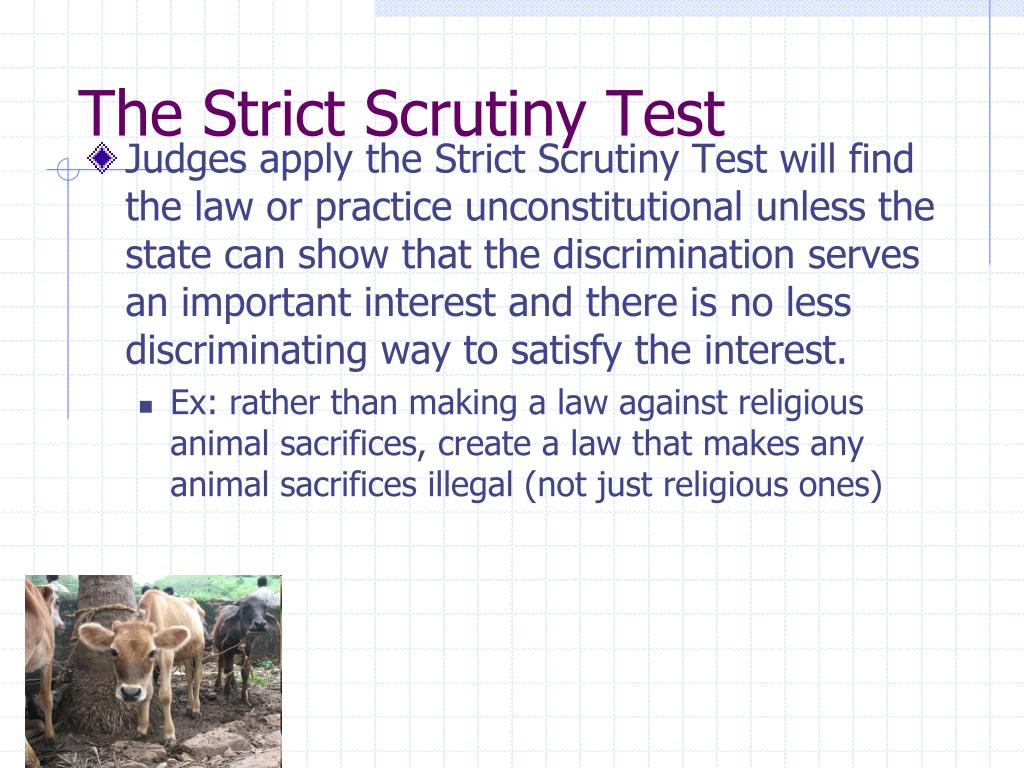

#TIERS OF SCRUTINY PROFESSIONAL#
Board of Regents of the University of OklahomaĪn African-American person who is qualified to receive professional legal education offered by a state cannot be denied such education because of their color. However, pressing public necessity may sometimes justify the existence of such restrictions. Strict scrutiny of the classification that a state makes in a sterilization law is essential, lest invidious discriminations are made against groups or types of individuals in violation of the constitutional guaranty of just and equal laws.Īll legal restrictions that curtail the civil rights of a single racial group are immediately suspect and must be subjected to the most rigid scrutiny. If a state furnishes higher education to white residents, it is bound to furnish substantially equal advantages to African-American residents, although not necessarily in the same schools. (Footnote 4 laid the foundation for heightened scrutiny in certain situations involving fundamental rights, the political process, and racial, national, or religious minorities.) Regulatory legislation affecting ordinary commercial transactions is not unconstitutional unless it is of such a character as to preclude the assumption that the law rests on a rational basis within the knowledge and experience of the legislature. is not denied the equal protection of the law by being classed by the state among the colored races who are assigned to public schools separate from those provided for the whites when equal facilities for education are afforded to both classes.

The regulation of the working hours of women falls within the police power of the state, and a statute directed exclusively to such regulation does not conflict with the Due Process or Equal Protection Clauses.Ī child of Chinese blood who is a citizen of the U.S. (This decision essentially applied rational basis review to what would now be considered a suspect classification and was overturned by Brown v. When the laws of a state, as enacted by its legislative and construed by its judicial and administered by its executive departments, recognize and protect the rights of all persons, the Fourteenth Amendment imposes no duty and confers no power on Congress.Ī state law prohibiting a white person and an African-American person from living with each other “in adultery or fornication” did not violate the Constitution even though it prescribed penalties more severe than those to which the parties would be subject, were they of the same race and color.Ī law that authorizes or even requires the separation of the two races in public conveyances is not unreasonable. Individual invasion of individual rights is not the subject matter of the amendment. It is state action of a particular character that is prohibited by the Fourteenth Amendment.
#TIERS OF SCRUTINY TRIAL#
When a state law secures to every white man the right of trial by a jury selected from and without discrimination against his race, and at the same time permits or requires such discrimination against the colored man because of his race, the latter is not equally protected by law with the former. Rational basis review provides the standard when no suspect or quasi-suspect classification is involved, such as when the government imposes economic regulations. Intermediate scrutiny is usually triggered by a “quasi-suspect classification,” such as gender or legitimacy. Strict scrutiny is usually triggered when a government action involves a “suspect classification,” such as race, religion, national origin, or alienage (lack of citizenship).

Intermediate scrutiny: the government must show that its action furthers an important government interest by using means that are substantially related to that interest.Strict scrutiny: the government must show that its action furthers a compelling government interest and is narrowly tailored to achieve that interest.Over time, courts have developed three general tiers of scrutiny for reviewing equal protection challenges: While the Fourteenth Amendment applies only to the states, courts have determined that equal protection principles implicitly apply to the federal government as well. Constitution provides that no state may deny to any person within its jurisdiction the equal protection of the laws.

The Equal Protection Clause in the Fourteenth Amendment to the U.S.


 0 kommentar(er)
0 kommentar(er)
